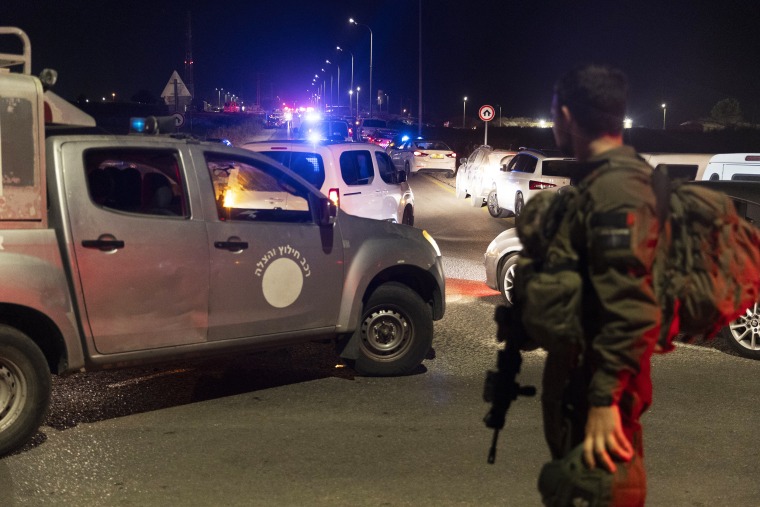The United States announced it is sending an advanced anti-missile system and a number of troops to Israel, deepening America’s involvement in the spiraling conflict as the region readies for Israeli retaliatory strikes against Iran.
The decision was announced just hours before a Hezbollah drone strike on an Israeli base killed four soldiers and wounded 61 others without triggering an alert.
The Terminal High Altitude Area Defense, known as THAAD, usually requires about 100 troops to operate, and has six truck mounted launchers, with eight interceptors on each launcher, as well as a powerful radar. It is capable of intercepting ballistic missiles at ranges of 100 to 125 miles.
Retired Brigadier General Zvika Haimovich, former head of the Israeli Air Defense, said Israel expected even an bigger barrage of missiles from Iran in “the next phase,” after Tehran fired more than 180 missiles at Israel on Oct 1.
He said Israel needed THAAD as well as its own Iron Dome defense systems to deal with any attacks, and this latest barrier in Israel’s defense is set to arrive as the nation weighs up its response to Iran’s attack, which may well elicit further retaliation.
“You always need more power,” Haimovich told NBC News. “We try to predict the future that the Iranians will use again this method of big salvos, even bigger than these 200 missiles.”
The U.S. has previously aided Israel’s defenses during missile attacks from Iran by providing support from from warships and fighter jets in the Middle East. But the presence of U.S. equipment and troops inside Israel would deepen the nation’s involvement in the crisis.

While THAAD would not necessarily have prevented Hezbollah’s deadly strike Sunday, Haimovich said it would help ease the burden on the nation’s stretched air defenses.
“They are the most challenging and most complicated threats that we are feeling,” he said of the drones. “They are very small. Low altitude. Low speed, a huge challenge for the detection.”
“We found our defense forces stretching from south to north, from east to west, dealing simultaneously with UAVS, with cruise missiles, rocket and missiles,” he added.
“We are not prepared enough for situation and the fact is that our enemies recognize that,” he added.
Iran’s foreign minister Abbas Araqchi responded to the news about THAAD by warning that the U.S. was putting the lives of its troops “at risk” by deploying them to operate missile systems in Israel.
“While we have made tremendous efforts in recent days to contain an all-out war in our region, I say it clearly that we have no red lines in defending our people and interests,” Araqchi posted on X.
Fawaz Gerges, a professor of international relations at the London School of Economics, told NBC News that President Joe Biden was sending a message to Iran that the U.S. will do “whatever it takes to protect Israel,” but warned the move risked escalating regional conflict.
“This risky strategy risks an all-out wider regional war,” he said. “This is the exact opposite of what the Biden administration has been trying to do.”
The arrival of THAAD and and U.S. support might ease the burden on Israel’s defense system, but Israel’s latest reliance on its allies for protection may also speak to the cracks in its often impenetrable armor.
“Hezbollah is almost back on its feet,” added Gerges.
“The arrival of U.S. support reflects badly on Israeli deterrence. From Hezbollah’s perspective, Israel is vulnerable and could be bled.”

Leave a Reply